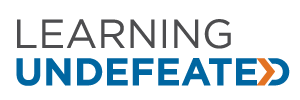As published on washingtonpost.com by Bahia Jallal and Brian Gaines on June 29, 2015

Students at Hammond High School in Columbia, Maryland solve real world problems on board the mobile laboratory MdBioLab. (Photo by Ned Dishman)
Dina Link may not be a household name, but she holds one of the most important jobs in the American economy: high school science teacher. At Northwest High School in Germantown, Md., she helps mold the next generation of scientists so that they can compete for jobs in an economy dominated by science, technology, engineering and math, or STEM.
Too often, however, teachers like Ms. Link aren’t given a clear picture of the types of skills America’s top STEM employers want from tomorrow’s workforce. Nor do they always know what inspires a high school student to become a genetic engineer later in life. This gap in knowledge is one of several obstacles America must overcome if we are to lead the world in STEM workforce development.
Fortunately, we can shed new light on this challenge. The MdBio Foundation, in collaboration with the Science Advisory Board, recently surveyed more than 500 scientists nationwide to learn when in their lives they decided to pursue a STEM career and what experiences motivated them to do so. Some results may surprise you.
For instance, 58 percent of those surveyed said they decided to pursue a STEM career before they even entered college. Indeed, some scientists report choosing to pursue a STEM career as early as middle school. This finding underscores that teachers like Ms. Link are a crucial lynchpin in the effort to train America’s STEM workforce to compete in the new century.
Another survey finding stood out to us. A solid majority of those surveyed (53 percent) said hands-on experience — such as internships and summer jobs — was the most important factor in landing a full-time STEM job. In fact, they report it was more important to their careers than the reputation of their college, their degree or their career networking.
Consider that for a moment. Some of America’s best scientists say that neither the reputation of their college, the credibility lent by their degree or years of career networking could match the transformative power of being exposed to the real-world application of science early in their lives.
What should we take from these findings? We believe they represent a clarion call for stronger ties between America’s STEM employers and K-12 schools.
 Companies that rely on STEM professionals must partner with middle and high school students to offer opportunities for hands-on experience. If real-world application of science is most likely to inspire a student, then companies should offer that experience through summer internships, class mentorships and even field trips to research labs.
Companies that rely on STEM professionals must partner with middle and high school students to offer opportunities for hands-on experience. If real-world application of science is most likely to inspire a student, then companies should offer that experience through summer internships, class mentorships and even field trips to research labs.
Additionally, STEM companies should work with middle and high school science teachers like Ms. Link. Preparing students for a STEM career would be a lot easier if teachers had a clear picture of the types of skills America’s top STEM employers seek in workers.
Companies can easily step up their involvement and get involved—from summer internship programs that let students apply the lessons they’ve learned in school to real-world science projects, to one-on-one guidance, mentorship and job shadowing from your employees. Commitments to STEM education can also include support of science summer camps or sponsorships of local science fairs or student competitions. Or companies could seek out teachers like Ms. Link to bolster their efforts to expose students to STEM careers by hosting high school classes for lab tours and presentations throughout the school year.
Teachers like Ms. Link may never become household names, but their value to America’s economic future is beyond dispute. The sooner we help them excel at their jobs, the more likely it is that U.S. STEM companies excel at theirs in the future.
Jallal is executive vice president of AstraZeneca and head of its global biologics research and development arm, MedImmune. Gaines is president and chief executive of MdBio Foundation, a Maryland-based non-profit organization that provides STEM education opportunities.






